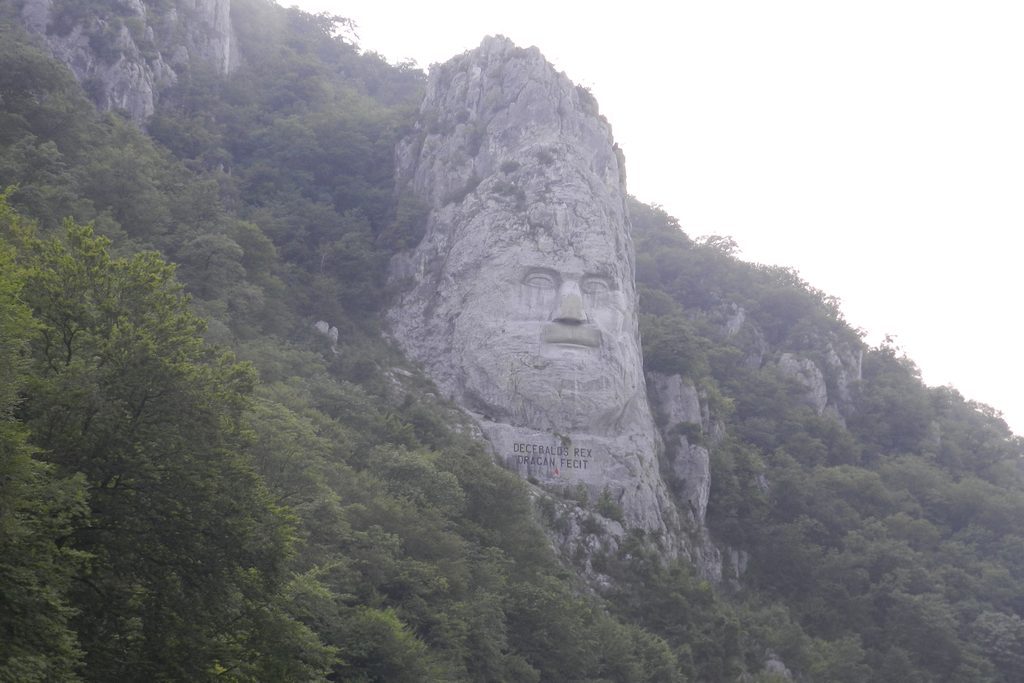

The face of the Dacian king Decebal is a bas-relief with a height of 55 m, situated on the cliffy border of the Danube. The bas-relief represents Decebal, the last king of Dacia, and it is sculpted in a cliff. It is the highest stone sculpture from Europe.
The face of Decebal has a height of 55 m and a width of 25 m. The place of execution of the sculpture is in the proximity of the city Orșova, in the area of the cataracts from Cazanele Mici (the golf of Mraconia), on the left border of the Danube, where the deepness of the river is the biggest: 120 meters.
A few physiognomy dimensions of the face are: the length of the eyes: 4, 3 meters, the length of the nose: 7 meters, the width of the nose: 4 meters.
The idea of building this bas-relief belonged to the Romania business man Iosif Constantin Drăgan, an amateur historian, and lasted 10 years (1994 – 2004) for the 12 sculptors – alpinists in order to finish it, its execution costing Drăgan, at the end, over one million dollars.
In comparison with the sculptures executed on Mountain Rushmore, whose execution lasted for a period of 14 years (1927 – 1941), at this project working over 300 sculptors – alpinists, the face of the king Decebal was developed for a period of ten years and 12 people worked at its execution. The execution of this work was developed under the command of the Romanian sculptor Florin Cotarcea, it being executed despite the danger represented by the heights, warmth and vipers.
The execution of the work started in the summer of the year 199, with the clearance of the trees which afforested the cliff. Then there was passed to cleaning the rocks, the massive cliffs which endangered the life of the people. There couldn’t be used any kind of heavy equipments, all the working tools being transported with the boat and with bags of 40 – 50 kilograms carried in their backs.
The connection with the boat bridge was ensured by two stations of transmit – receive. From the base of the cliff until the framing, the alpinist – sculptors had to climb for half an hour. There was worked in two shifts with duration of 6 hours: from 7, 30 until 13, 30 and from 13, 30 until 19, 30. The works were developed in the period March – October of each year. An equally hard and risky operation was the one of maneuvering the framings. The working tools used by the sculptor – alpinists were the classical ones: the air forging hammer, the punch and the hammer. In the summer period, the cliff would heat up because of the sun, making the working conditions almost unbearable.
Right in front of the bas-relief, from the Serbian border, there is found for almost 2000 years an antique memorial plate (“Tabula Traiana”), having a length of 4 meters and a height of 1, 75 meters, the monument built by the opponent of king Decebal, the Roman Emperor Traian, in order to mark the marching of the imperial troops towards Dacia and for celebrating the victories of the Roman Empire against the Dacian kingdom in the War from 105 – 106, but also the finalizing of the Roman military road of Traian.
